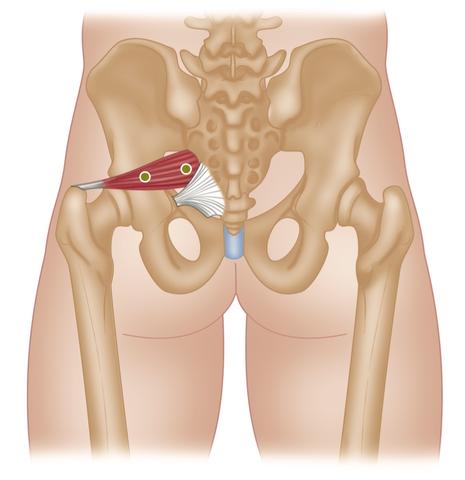Benefits of Stretching for Sciatica and Piriformis Syndrome
Sciatic Pain - Dr. Elizabeth Wagner DPT demonstrates stretching exercises for the Piriformis and Gluteal muscles
A number of studies have shown the benefits of manual therapy and stretching for treating sciatica
Sciatica is a symptom of an underlying medical condition, such as a lumbar herniated disc, degenerative disc disease, or spinal stenosis. It is not a medical condition in and of itself.
Overview of Sciatica
The condition is characterized by pain that radiates along the path of the sciatic nerve.
This is the largest nerve in the body, beginning at the lower back, and running through the hips and buttocks down to each leg.
In most cases, sciatica affects only one side of the body, but can affect both (bilateral sciatica).
Where symptoms are felt in both legs, it typically means that the cause of the compression, such as a herniated disc, is big enough to compress nerve roots on both sides of the spine.
It is of course possible that two separate conditions have developed on opposite sides of the spine, but this would obviously be a rarity.
In most cases, sciatica develops when the sciatic nerve is compressed by a herniated disk or bone spur.
This causes inflammation, pain, and sometimes numbness in the affected side.
It's worth noting that it's not unusual to come across sciatica in pregnant women due to an irritation of the sciatic nerve during pregnancy.

Trigger Points in the Piriformis are typically associated with Sciatica
What Are the Symptoms of Sciatica?
The pain associated with sciatica can vary in degree. We see many clients who experience infrequent pain whilst others suffer so severely from the pain as to be largely incapacitated.
Sciatica is often characterised by the following symptoms. The client may experience only one or a combination:
• Constant pain in one side of the leg or buttock
• Pain worsens when sitting
• Burning, tingling, or searing pain in the leg
• Weakness, numbness, or difficulty moving the leg or foot
• A sharp pain which might affect the ability to walk or to stand up
Clients often describe how these symptoms worsen when they cough, sneeze, or sit for a long period of time.
Who Is Prone to Sciatica?
The probability of experiencing pain from sciatica peaks in the 50's and then declines.
It is rare to see clients under the age of 20 suffering from this condition.
Those who suffer from degenerative arthritis of the lumbar spine, lumbar disc diseases, slipped disc, or a trauma or injury to the lumbar spine are the groups who are at a higher risk.
Studies have shown that obesity or even being overweight can increase the risk of sciatica, as the weight will increase stress on the spine.
A job that requires you to twist your back, carry heavy objects, or drive a motor vehicle for long periods of time, may also contribute to increasing the risk factor.
The other group worth noting are diabetes sufferers who are at increased risk because the way that the body uses blood sugar increases the risk of nerve damage.
In summary, whilst there are those cases of sciatica which require more aggressive intervention to deal with the underlying cause, the preferred and most effective treatment in most cases is manual therapy including trigger point therapy, and prescribed stretching and strengthening exercises.
The trigger points commonly (almost always) associated with sciatica are found in piriformis, and gluteus maximus.
It's worth mentioning that Dr. Travell refered to the gluteus minimus as the “Psuedo-Sciatica” muscle because its trigger points can refer pain that mimic the symptoms associated with true neurological sciatica.
This blog is intended to be used for education purposes only and is not intended to be used for medical diagnosis or treatment or to substitute for a medical diagnosis and/or treatment rendered or prescribed by a physician or competent healthcare professional. This information is designed as educational material, but should not be taken as a recommendation for treatment of any particular person or patient. Always consult your physician if you think you need treatment or if you feel unwell.
About Niel Asher Education
Niel Asher Education (NAT Global Campus) is a globally recognised provider of high-quality professional learning for hands-on health and movement practitioners. Through an extensive catalogue of expert-led online courses, NAT delivers continuing education for massage therapists, supporting both newly qualified and highly experienced professionals with practical, clinically relevant training designed for real-world practice.
Beyond massage therapy, Niel Asher Education offers comprehensive continuing education for physical therapists, continuing education for athletic trainers, continuing education for chiropractors, and continuing education for rehabilitation professionals working across a wide range of clinical, sports, and wellness environments. Courses span manual therapy, movement, rehabilitation, pain management, integrative therapies, and practitioner self-care, with content presented by respected educators and clinicians from around the world.
Known for its high production values and practitioner-focused approach, Niel Asher Education emphasises clarity, practical application, and professional integrity. Its online learning model allows practitioners to study at their own pace while earning recognised certificates and maintaining ongoing professional development requirements, making continuing education accessible regardless of location or schedule.
Through partnerships with leading educational platforms and organisations worldwide, Niel Asher Education continues to expand access to trusted, high-quality continuing education for massage therapists, continuing education for physical therapists, continuing education for athletic trainers, continuing education for chiropractors, and continuing education for rehabilitation professionals, supporting lifelong learning and professional excellence across the global therapy community.

Continuing Professional Education
Looking for Massage Therapy CEUs, PT and ATC continuing education, chiropractic CE, or advanced manual therapy training? Explore our evidence-based online courses designed for hands-on professionals.


















